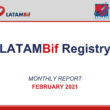The number of people with post-COVID-19 syndrome seems to be growing exponentially, so we need long-term data to help physicians advise patients correctly. Among the many persistent symptoms, post-COVID-19 anosmia has good prognosis and almost full recovery at 1 year. In April, 2020, these same authors published a cohort of almost 100 COVID-19 positive patients (positive...
Bifurcations: A Long Return Journey
When it looked like the simplest techniques reach the best outcomes, along came the DK Crush studies. Indeed, after the COVIS III results in bifurcations, it appeared we had started to retrace our steps back to the foundation. The purpose of this study was to compare long term outcomes of the remarkably simple 1-stent strategy...
EuroPCR 2021 | TVT Registry: Outcomes of TAVR in Low Surgical Risk Bicuspids
In bicuspid patients with aortic stenosis and low surgical risk, transcatheter aortic valve replacement (TAVR) with balloon expandable valve offers results comparable to normal anatomy results. These data come from the TVT registry, presented at EuroPCR 2021 scientific sessions. Stroke and death rates (inhospital, 30 days and one year) in bicuspid patients did not result...
EuroPCR 2021 | FUTURE II: Bioresorbable Scaffolds Reloaded
A new sirolimus-eluting bioresorbable scaffold with far thinner struts resulted non inferior to the Xience as to the end point of angiographic in-segment late loss (LL) powered for noninferiority testing. Even though this is a small study with angiographic end points, it might be the first step towards the return of bioresorbable scaffolds. Read also:...
ACC 2021 | RAPID-TnT: Usefulness of High-Sensitivity Ultra-Fast Troponin T
Patients under evaluation for acute coronary syndrome (ACS) without clear ischemia signs in an electrocardiogram find no benefit in a 0/1-hour high-sensitivity troponin T (ultra-fast) protocol compared with the conventional 0/3-hour protocol. These data come from the RAPID-TnT trial presented during the scientific sessions at the American College of Cardiology (ACC) 2021 Congress, simultaneously published in...
New Unexpected Data on Non-Culprit Vessels in MI
Patients with acute myocardial infarction presenting lesions in multiple vessels is not associated with reduced infarct size in non-culprit lesions, even when functionally significant. Animal models suggest brief periods of ischemia in non-infarct territories (non-culprit) might protect culprit territory thanks to remote ischemic preconditioning. This pre-conditioning, according to this perspective, would reduce reperfusion injury and...
The most read scientific articles on interventional cardiology of april
01- Post MI Betablockers for Good? Patients receiving optimal medical treatment after MI do not seem to benefit from betablockers in the long term, provided they do not present cardiac failure or systolic function deterioration. Read more HERE 02- Thrombocytopenia and Thrombosis May Be Linked to AstraZeneca Vaccine, Analysis Reports This is one of the...
[APT Medical Sponsored Clinical Case] Bilateral Distal Transradial Access for Chronic Total Occlusion Recanalization and Multivessel Coronary Disease Percutaneous Intervention
Introduction Chronic total occlusion (CTO) represents the most challenging setting for percutaneous coronary intervention (PCI) and multivessel coronary disease (MCD) is often treated in a staggered manner and in a deferred procedure. Although transfemoral is one of the common access site, the transradial access (TRA) has been used with similar procedural success [1]. The distal...
Dual Antiplatelet Therapy and TAVR: Obsolete Guidelines
The current guidelines recommend dual antiplatelet therapy (DAPT) 3 to 6 months after transcatheter aortic valve replacement (TAVI). Some recent data finally condensed in the present meta-analysis and recently published in JAHA happen to challenge these guidelines. Clinical studies that investigated single antiplatelet therapy versus DAPT until November 2020 were analyzed and divided according to...
LATAMBif Registry: February 2021 Report
The Latin American Registry of Percutaneous Coronary Bifurcations continues to develop at a steady pace. The aim of this prospective multicenter registry is to assess the reality of percutaneous coronary bifurcation to define its needs and establish effective strategies to perfect the daily clinical practice. Bellow you will find data from February 2021, which includes...









